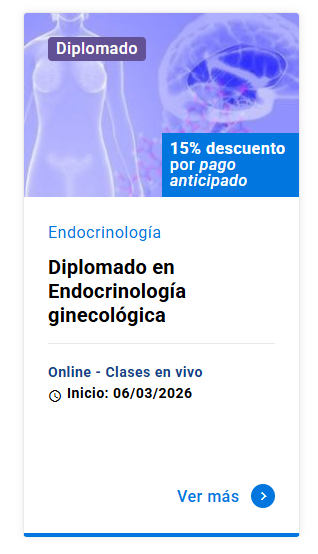Morbimortalidad perinatal en pacientes con rotura prematura ovular ≤24 semanas según cantidad de líquido amniótico al momento del diagnóstico
DOI:
https://doi.org/10.11565/arsmed.v43i1.1097Palabras clave:
rotura prematura ovular previable, oligohidroamnios, sobrevida neonatal, morbilidad perinatal, mortalidad perinatal.Resumen
Introducción: La rotura prematura ovular (RPO) antes de la viabilidad fetal consiste en una complicación obstétrica de baja incidencia, pero de alta morbimortalidad perinatal asociada. Estudios sugieren que el volumen de líquido amniótico (LA) es un factor importante a considerar. El objetivo de este trabajo es evaluar si en RPO ≤24 semanas, un bolsillo vertical máximo (BVM) <2cm al diagnóstico es un factor de riesgo para aparición de morbimortalidad fetal y neonatal.
Métodos: Estudio de cohorte longitudinal retrospectivo de 94 pacientes con RPO ≤24 semanas ingresadas a un hospital terciario para manejo expectante entre los años 2005 y 2014. Embarazo gemelar o malformaciones congénitas fueron criterios de exclusión. Se obtuvieron y compararon 2 grupos según BVM al ingreso (BVM ≥ 2 cm y BVM < a 2 cms) y se comparó la edad gestacional (EG) al momento de la RPO y al parto, la latencia desde la RPO al parto, la presencia de corioamnionitis clínica, el número de óbitos fetales, muerte neonatal precoz (primeros 7 días de vida), tardía (entre los 7 y 28 días) y sobrevida global.
Resultados: El 58% de las pacientes presentó un BVM <2 cm al ingreso, el cual se asoció a menor latencia al parto (p:0,01), menor EG al parto (p:0,02), más óbito fetal (p:0,04), mayor muerte neonatal precoz y tardía (p:0,02 y 0,01 respectivamente) además de menor sobrevida global (p:0,01).
Conclusiones: La medición de BVM <2 cm al ingreso en pacientes con RPO ≤24 semanas, es un factor de mal pronóstico y debe ser considerado en el manejo clínico de estas pacientes.
Descargas
Citas
Arias F, Victoria A, Cho K & Kraus F. (1997). Placental histology and clinical characteristics of patients with preterm premature rupture of membranes. Obstetrics & Gynecology 89, 265-271. DOI: https://doi.org/10.1016/S0029-7844(96)00451-6
Fortunato S, Welt S, Eggleston M & Bryant E. (1994). Active expectant management in very early gestations complicated by premature rupture of the fetal membranes. The Journal of reproductive medicine 39, 13-16.
Gibbs R, Blanco J, St Clair P, Castaneda Y. (1982)Quantitative bacteriology of amniotic fluid from patient with clinical intraamniotic infection at term. J Infect Dis; 145: 1-8 DOI: https://doi.org/10.1093/infdis/145.1.1
González-Mesa E, Herrera J, Urgal A, Lazarraga C, Benítez M & Gómez. (2012). Temporal trends of latency period and perinatal survival after very early preterm premature rupture of fetal membranes. Archives of gynecology and obstetrics 286, 347-352. DOI: https://doi.org/10.1007/s00404-012-2299-1
Grisaru-Granovsky S, Eitan R, Kaplan M & Samueloff A. (2003). Expectant management of midtrimester premature rupture of membranes: a plea for limits. Journal of perinatology 23, 235-239. DOI: https://doi.org/10.1038/sj.jp.7210880
Hadi H, Hodson C & Strickland D. (1994). Premature rupture of the membranes between 20 and 25 weeks’ gestation: role of amniotic fluid volume in perinatal outcome. American journal of obstetrics and gynecology 170, 1139-1144. DOI: https://doi.org/10.1016/S0002-9378(94)70109-1
Hibbard J, Hibbard M, Ismail M & Arendt E. (1993). Pregnancy outcome after expectant management of premature rupture of the membranes in the second trimester. The Journal of reproductive medicine 38, 945-951.
Hillier S, Martius J, Krohn M, Kiviat N, Holmes K & Eschenbach D. (1988). A case–control study of chorioamnionic infection and histologic chorioamnionitis in prematurity. New England Journal of Medicine 319, 972-978. DOI: https://doi.org/10.1056/NEJM198810133191503
Kilbride H, Yeast J & Thibeault D. (1996). Defining limits of survival: lethal pulmonary hypoplasia after midtrimester premature rupture of membranes. American journal of obstetrics and gynecology 175, 675-681. DOI: https://doi.org/10.1053/ob.1996.v175.a74409
Kurkinen-Räty M, Koivisto M & Jouppila P. (1998). Perinatal and neonatal outcome and late pulmonary sequelae in infants born after preterm premature rupture of membranes. Obstetrics & Gynecology 92, 408-415. DOI: https://doi.org/10.1097/00006250-199809000-00018
Lee Y, Ahn G & Jun K. (2015). Short-term and long-term postnatal outcomes of expectant management after previable preterm premature rupture of membranes with and without persistent oligohydramnios. American journal of obstetrics and gynecology 170, 1139-1144. DOI: https://doi.org/10.1097/AOG.0000000000001099
Margato M, Martins G, Júnior R & Nomura M. (2012). Previable preterm rupture of membranes: gestational and neonatal outcomes. Archives of gynecology and obstetrics 285, 1529-1534. DOI: https://doi.org/10.1007/s00404-011-2179-0
McElrath T. (2017). Midtrimester preterm premature rupture of membranes. En: UpToDate. LockwoodC, Barss V (eds)
Miyazaki K, Furuhashi M, Yoshida K & Ishikawa K. (2012). Aggressive intervention of previable preterm premature rupture of membranes. Acta obstetricia et gynecologica Scandinavica 91, 923-929. DOI: https://doi.org/10.1111/j.1600-0412.2012.01432.x
Morales W. (1987). The effect of chorioamnionitis on the developmental outcome of preterm infants at one year. Obstetrics & Gynecology 70, 183 - 186.
Muris C, Girard B, Creveuil C, Durin L, Herlicoviez M & Dreyfus M. (2007). Management of premature rupture of membranes before 25 weeks. European Journal of Obstetrics & Gynecology and Reproductive Biology 131, 163-168. DOI: https://doi.org/10.1016/j.ejogrb.2006.05.016
Shumway J, Al-Malt A, Amon E, Cohlan B, Amini S, Abboud M & Winn H. (1999). Impact of oligohydramnios on maternal and perinatal outcomes of spontaneous premature rupture of the membranes at 18-28 weeks. Journal of Maternal-Fetal Medicine 8, 20-23. DOI: https://doi.org/10.1002/(SICI)1520-6661(199901/02)8:1<20::AID-MFM5>3.3.CO;2-Z
Sim H, Araujo Júnior E, Da Silva Costa F & Sheehan M. (2017). Maternal and neonatal outcomes following expectant management of preterm prelabour rupture of membranes before viability. American journal of obstetrics and gynecology 170, 1139-1144. DOI: https://doi.org/10.1515/jpm-2016-0183
Test G, Levy A, Wiznitzer A, Mazor M, Holcberg G, Zlotnik A & Sheiner E. (2011). Factors affecting the latency period in patients with preterm premature rupture of membranes. Archives of gynecology and obstetrics 283, 707-710. DOI: https://doi.org/10.1007/s00404-010-1448-7
Wagner P, Sonek J, Mayr S, Abele H, Goelz R, Hoopmann M & Kagan K. (2016). Outcome of pregnancies with spontaneous PPROM before 24+ 0 weeks’ gestation. European Journal of Obstetrics & Gynecology and Reproductive Biology 203, 121-126. DOI: https://doi.org/10.1016/j.ejogrb.2016.05.018
Waters T & Mercer B. (2009). The management of preterm premature rupture of the membranes near the limit of fetal viability. American journal of obstetrics and gynecology 201, 230-240. DOI: https://doi.org/10.1016/j.ajog.2009.06.049
Descargas
Publicado
Cómo citar
Licencia
Derechos de autor 2018 ARS MEDICA Revista de Ciencias Médicas

Esta obra está bajo una licencia internacional Creative Commons Atribución-CompartirIgual 4.0.
Los autores/as conservan sus derechos de autor y garantizan a la revista el derecho de primera publicación de su obra, la que estará simultáneamente sujeta a la Licencia CC BY-SA 4.0 (Ver declaración de Acceso Abierto).







